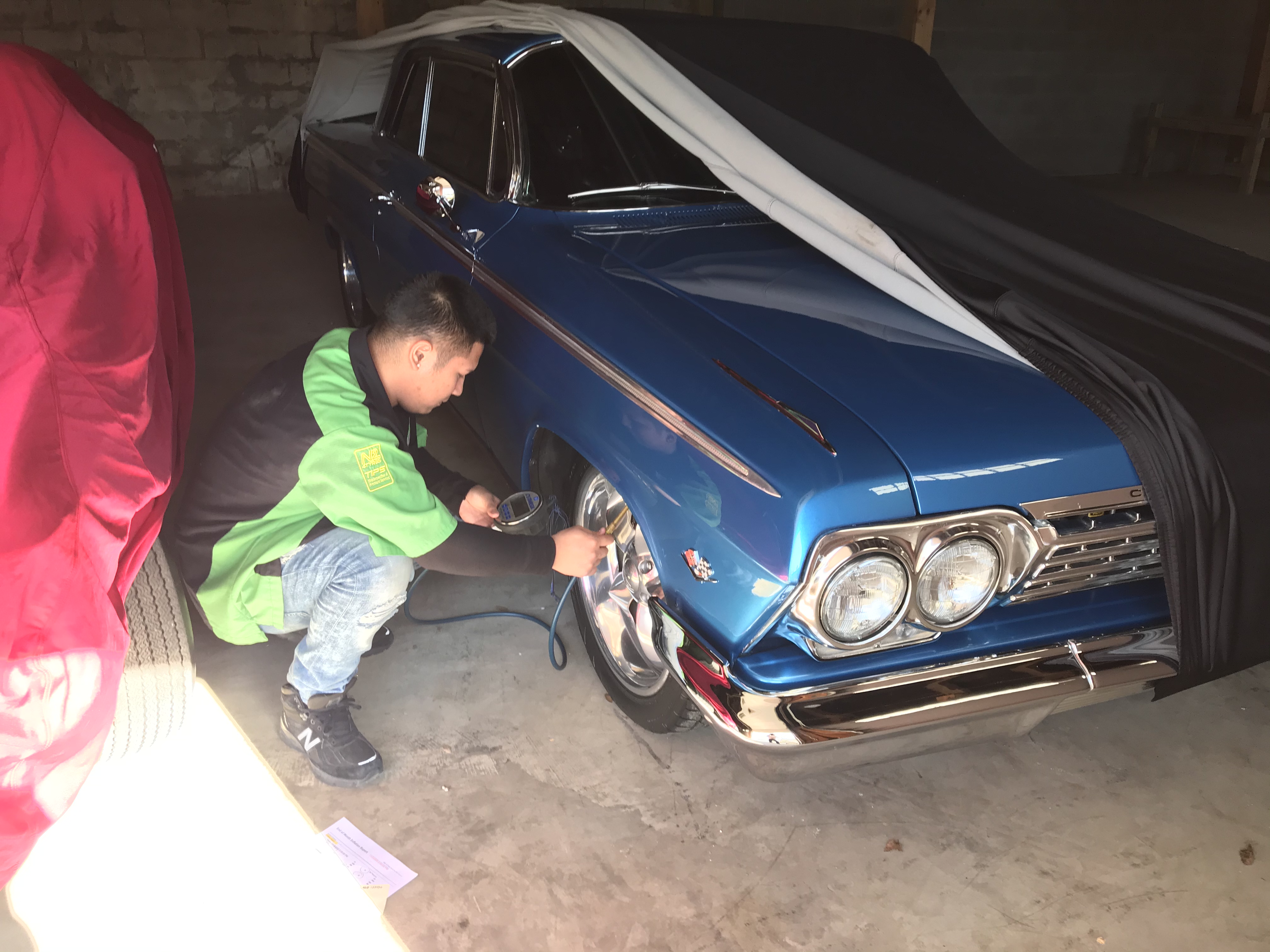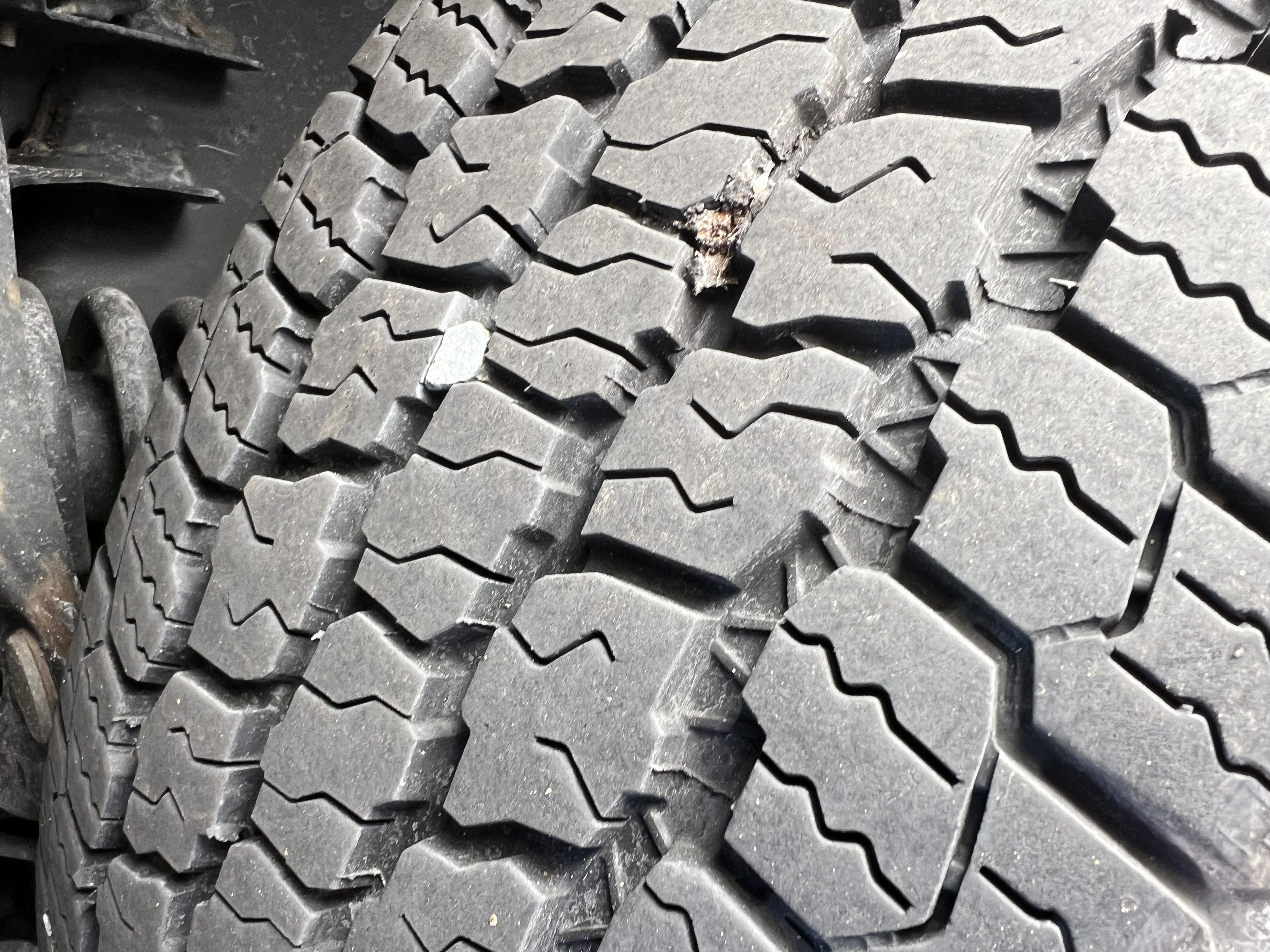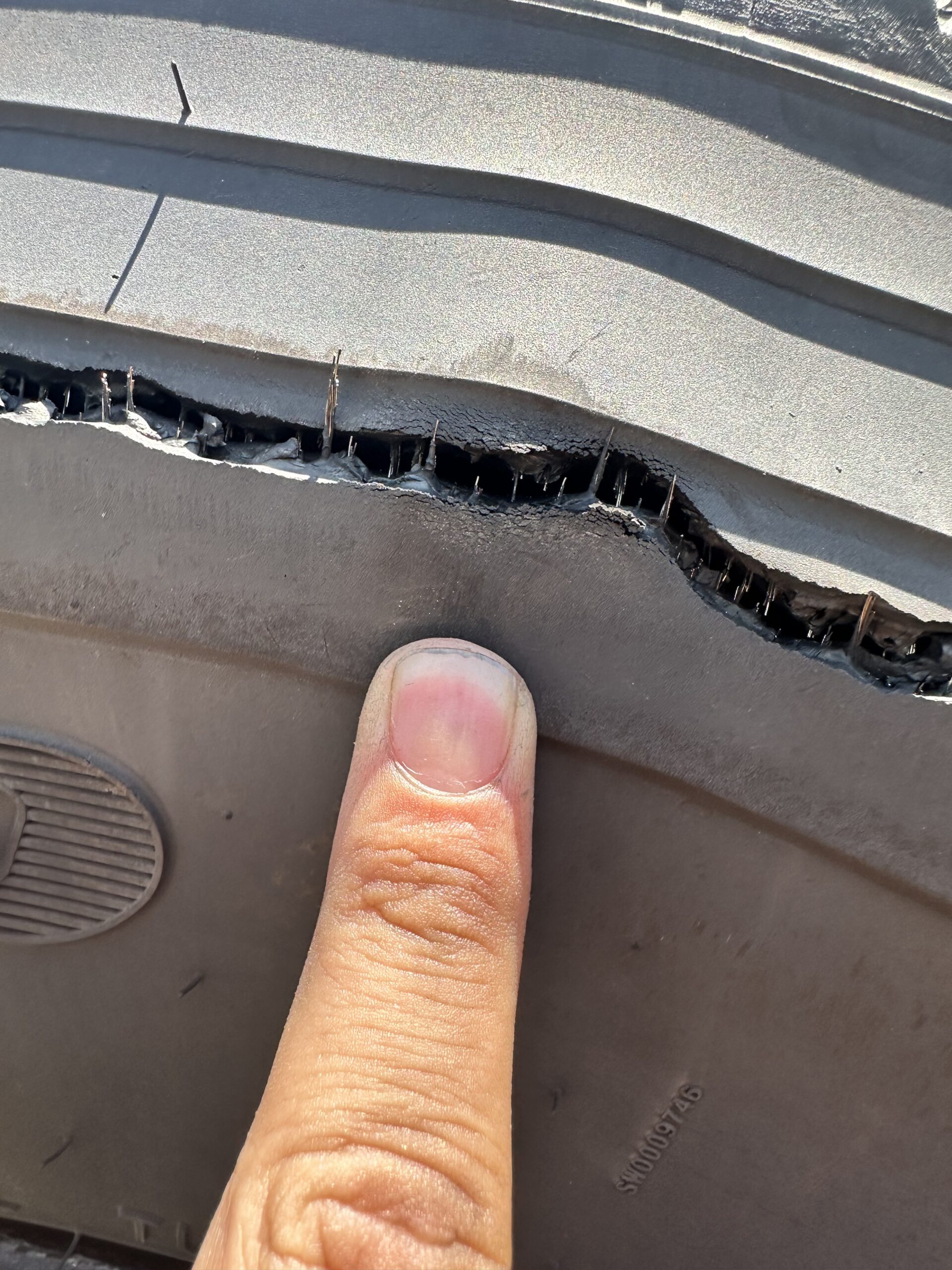The importance of a thorough tire safety inspection cannot be overstated. Whether you manage a fleet of commercial trucks or drive a single vehicle, ensuring your tires are in optimal condition is crucial for several reasons. Properly inflated and maintained tires not only enhance vehicle safety but also improve fuel efficiency, extend tire life, and contribute positively to the environment.
Tire safety inspections encompass a variety of checks and procedures. These include examining tire tread depth, checking for signs of wear and damage, and ensuring correct tire pressure. A regular inspection routine can prevent unexpected tire failures, reduce the risk of accidents, and save money by avoiding premature tire replacements.
At Fuel & Tire Saver Systems Company, LLC, we specialize in mobile onsite nitrogen tire inflation services across Virginia, Maryland, Pennsylvania, North Carolina, Tennessee, and Georgia. Our expert team visits your location, inspects your fleet’s tires, and inflates them with nitrogen to maintain optimal pressure levels. This service helps in saving fuel, extending tire life, and making your vehicles much safer on the road.
Interested in enhancing your fleet’s tire safety? Request Fleet Pricing, complete our website form or contact our office at (703) 429-0382 or email Mike.LoPresti@fuelandtiresaver.com.
Table of Contents
ToggleImportance of Regular Tire Inspections

Regular tire inspections are essential for maintaining vehicle safety and performance. Tires are the only contact point between your vehicle and the road, making their condition paramount to safe driving. By conducting regular tire safety inspections, you can identify potential issues before they escalate into serious problems.
One of the primary reasons for regular inspections is to check tire pressure. Under-inflated or over-inflated tires can lead to uneven wear, reduced fuel efficiency, and increased risk of blowouts. Consistently maintaining the correct tire pressure ensures better fuel economy and prolongs the life of your tires.
Additionally, inspecting the tread depth is crucial. Tread depth affects your vehicle’s grip on the road, especially in adverse weather conditions. Worn-out treads can significantly reduce traction, increasing the likelihood of skidding and accidents. Regular checks help ensure that your tires have adequate tread depth for safe driving.
Another vital aspect of tire inspections is detecting any visible damage. Cuts, punctures, and bulges can compromise the structural integrity of tires, leading to sudden failures. Catching these issues early through routine inspections can prevent unexpected breakdowns and enhance overall vehicle safety.
In summary, regular tire inspections are a proactive measure to ensure road safety, improve vehicle performance, and extend the lifespan of your tires. By prioritizing these inspections, you can avoid costly repairs, enhance fuel efficiency, and drive with confidence.
Tools Needed for Tire Safety Check

To perform a thorough tire safety inspection, it’s essential to have the right tools at your disposal. These tools not only make the process more efficient but also help in identifying potential issues with precision. Here are some of the indispensable tools you will need:
- Tire Pressure Gauge: A reliable tire pressure gauge is crucial for checking the air pressure in your tires. Whether you opt for a digital or analog gauge, ensure it provides accurate readings to maintain the optimal tire pressure.
- Tread Depth Gauge: This tool helps measure the tread depth of your tires, ensuring they meet the minimum legal requirements. Adequate tread depth is vital for maintaining traction and preventing hydroplaning, especially in wet conditions.
- Air Compressor: Having an air compressor on hand allows you to quickly adjust tire pressure as needed. This is particularly useful for topping up tires that are slightly under-inflated, ensuring they are always at the optimal pressure.
- Jack and Jack Stands: These are essential for safely lifting your vehicle off the ground to inspect the tires. Never rely solely on a jack; always use jack stands for added safety.
- Flashlight: A good-quality flashlight helps you see clearly when inspecting tires for any cuts, punctures, or bulges. Proper lighting ensures that you don’t miss any minor issues that could escalate over time.
- Torque Wrench: This tool is vital for ensuring that your lug nuts are tightened to the manufacturer’s specifications. Over-tightening or under-tightening lug nuts can lead to wheel and tire issues.
By equipping yourself with these essential tools, you can perform a comprehensive tire safety inspection with confidence. Regular checks using these tools will help you maintain optimal tire condition, enhancing both vehicle performance and road safety.
Steps for Comprehensive Tire Inspection
Conducting a comprehensive tire safety inspection involves several critical steps to ensure your tires are in optimal condition. Follow these steps to perform a thorough check:
- Visual Inspection: Start by examining each tire for visible damage. Look for cuts, punctures, bulges, and any foreign objects that may be embedded in the tire. Pay close attention to the sidewalls and tread surface.
- Check Tire Pressure: Use a reliable tire pressure gauge to measure the air pressure in each tire. Compare the readings to the manufacturer’s recommended pressure levels, usually found in the vehicle’s owner manual or on a sticker inside the driver’s door. Adjust the pressure as needed using an air compressor.
- Measure Tread Depth: Utilize a tread depth gauge to check the depth of the tire tread. Insert the gauge into the tread grooves at multiple points around the tire. Ensure the tread depth meets the minimum legal requirement, typically 2/32 of an inch, but aim for more for better safety and performance.
- Inspect for Uneven Wear: Uneven tire wear can indicate alignment issues or improper tire inflation. Look for areas where the tread is more worn down compared to other parts of the tire. Rotating your tires regularly can help promote even wear.
- Check for Sidewall Damage: Examine the sidewalls of each tire for cracks, cuts, or bulges, which can compromise the tire’s structural integrity. Sidewall damage often necessitates tire replacement.
- Inspect Valve Stems: Ensure that the valve stems are in good condition and free from cracks or damage. A damaged valve stem can cause air leaks and should be replaced if necessary.
- Verify Lug Nut Tightness: Use a torque wrench to ensure that all lug nuts are tightened to the manufacturer’s specifications. Properly torqued lug nuts are essential for wheel security and can prevent issues such as wheel detachment.
- Check for Alignment and Balance: If you notice any irregular wear patterns or if your vehicle pulls to one side, it may be time to check the alignment and balance of your tires. Proper alignment and balance contribute to even tire wear and overall vehicle stability.
Following these steps will help you perform a comprehensive tire inspection, ensuring that your tires are safe, efficient, and ready for the road. Regular inspections are crucial for maintaining tire health and enhancing your driving experience.
Common Tire Issues and Solutions

Even with regular tire safety inspections, tires can encounter a variety of issues over their lifespan. Understanding these common problems and their solutions can help you address them promptly and maintain optimal tire performance.
- Underinflation: Tires that are underinflated can lead to reduced fuel efficiency, increased wear, and a higher risk of blowouts. The solution is simple: regularly check and maintain the recommended tire pressure using a reliable gauge. For added convenience and accuracy, consider using nitrogen inflation, which maintains tire pressure longer than regular air.
- Overinflation: Overinflated tires can cause a harsh ride and uneven tread wear, particularly in the center of the tire. To resolve this, always adhere to the manufacturer’s recommended pressure levels, and adjust accordingly.
- Uneven Tire Wear: Various factors, such as improper alignment, unbalanced tires, or incorrect tire pressure, can cause uneven wear. To mitigate this, ensure regular tire rotations, alignments, and balance checks. Additionally, inspect and adjust tire pressure frequently.
- Treadwear and Bald Spots: Over time, tires naturally wear down, but excessive treadwear or bald spots can significantly reduce traction and increase the risk of hydroplaning. Regularly measure tread depth and replace tires when they reach the minimum legal tread depth of 2/32 of an inch.
- Sidewall Damage: Cracks, cuts, or bulges in the sidewall can compromise the structural integrity of the tire, leading to potential blowouts. If sidewall damage is detected, it’s imperative to replace the affected tire immediately.
- Slow Leaks: Slow leaks can be caused by small punctures, valve stem issues, or bead leaks. Identifying and repairing the source of the leak is crucial. Depending on the severity, you may need a simple patch or a complete tire replacement.
- Vibration or Pulling: If you experience vibrations or the vehicle pulling to one side, it could indicate alignment issues, unbalanced tires, or internal tire damage. A professional inspection and correction are necessary to resolve these issues.
By recognizing and addressing these common tire issues, you can enhance your vehicle’s safety, performance, and fuel efficiency. Regular maintenance and prompt action are key to extending the lifespan of your tires and ensuring a smooth driving experience.
Benefits of Mobile Nitrogen Tire Inflation

Mobile nitrogen tire inflation offers numerous advantages that go beyond traditional air inflation. This innovative service brings convenience and multiple benefits directly to your fleet, enhancing overall vehicle performance and safety.
One of the primary benefits of nitrogen inflation is its ability to maintain tire pressure more consistently than regular air. Nitrogen molecules are larger and less likely to seep through the rubber, resulting in reduced pressure loss over time. This leads to improved fuel efficiency due to optimized tire pressure, which can save your fleet significant costs in fuel expenditure.
Moreover, nitrogen inflation minimizes the moisture content inside the tire. Traditional compressed air contains water vapor, which can cause corrosion and rust on the internal components of the tire and wheel. By using nitrogen, you reduce the risk of corrosion, thereby extending the lifespan of your tires and wheels.
Another significant advantage is the enhanced safety that comes with stable tire pressure. Properly inflated tires provide better traction, handling, and braking performance, reducing the likelihood of tire failures and accidents. This is particularly crucial for commercial fleets that travel long distances and carry heavy loads.
Mobile nitrogen tire inflation services bring these benefits directly to your location, eliminating the downtime associated with transporting vehicles to a service center. This convenience ensures that your fleet stays on the road longer and operates more efficiently.
Additionally, by choosing nitrogen inflation, you are making an environmentally conscious decision. Improved fuel efficiency and extended tire life contribute to reduced carbon emissions and less waste, aligning with sustainable business practices.
If you are ready to experience the advantages of mobile nitrogen tire inflation for your fleet, request fleet pricing by completing the website form, or contact our office at (703) 429-0382 or email Mike.LoPresti@fuelandtiresaver.com. Enhance your fleet’s performance and safety while contributing to a greener environment today!


